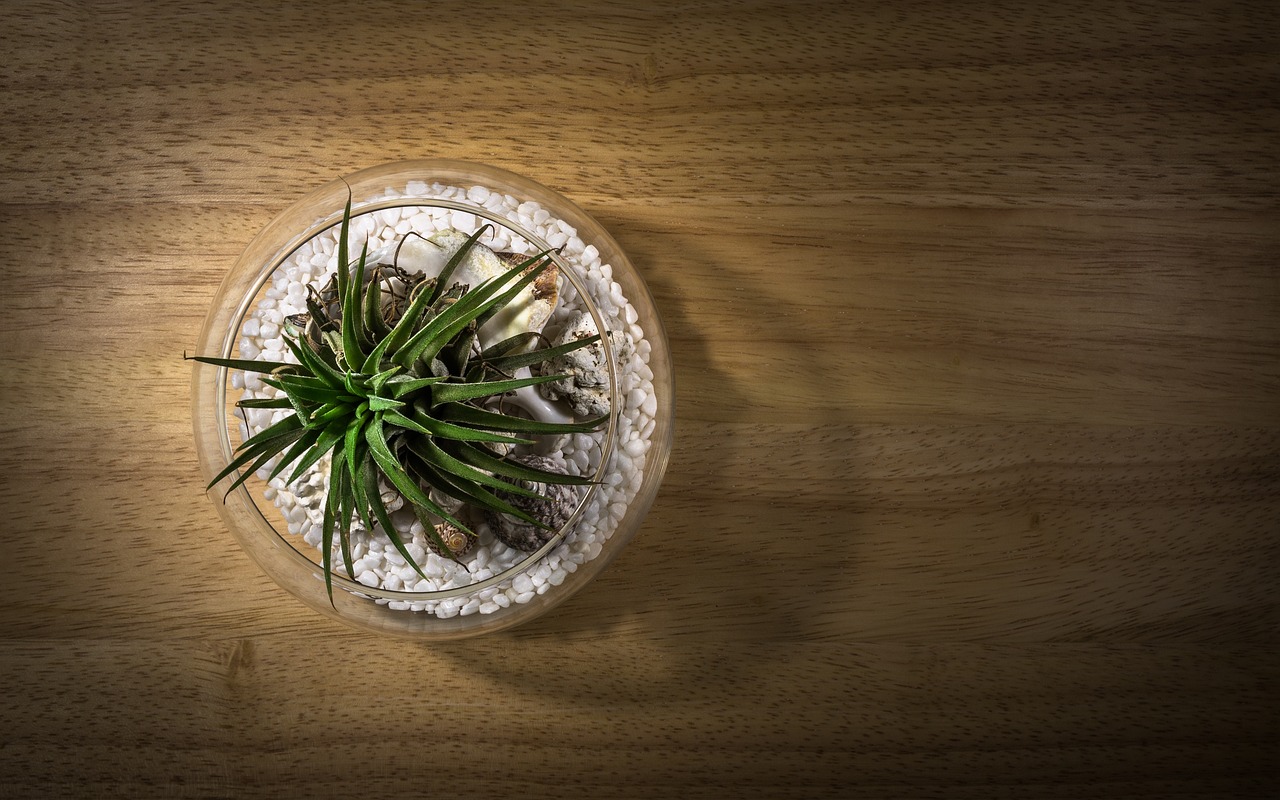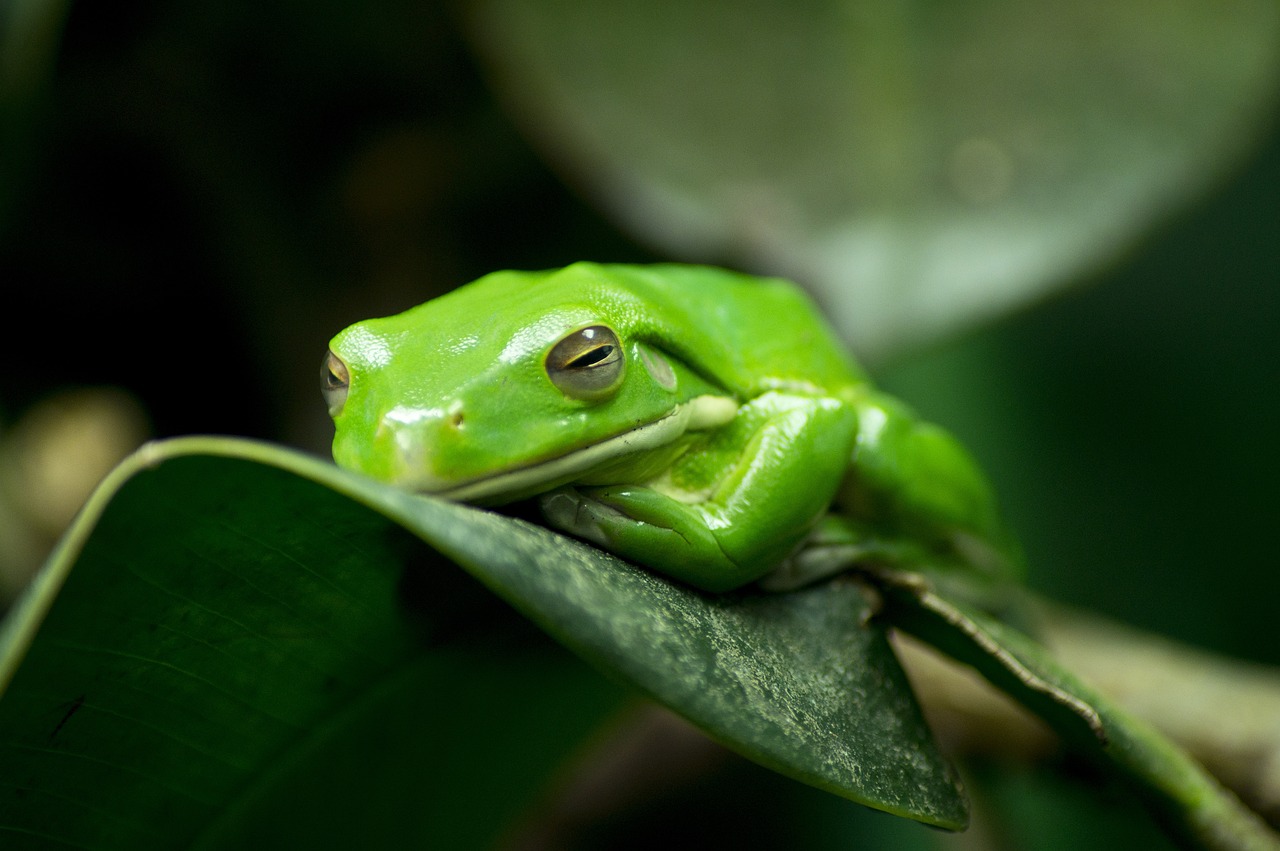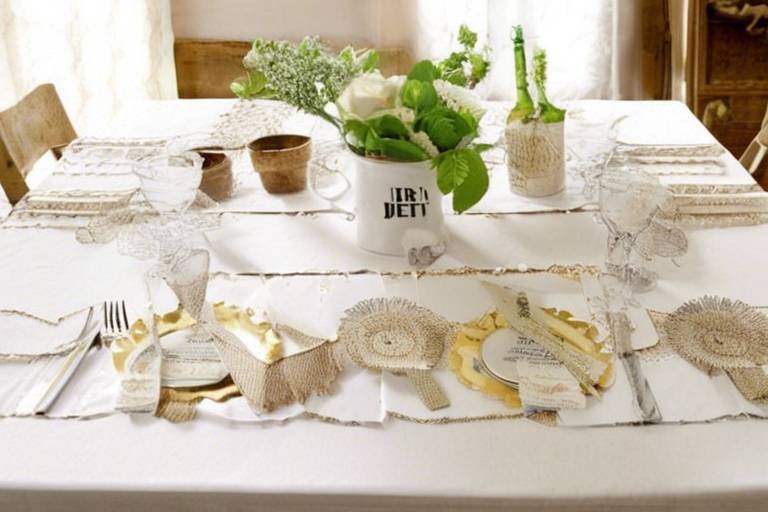How to Create a DIY Terrarium for Your Home
Creating a DIY terrarium for your home is a fun and rewarding project that can add a touch of nature to your living space. Terrariums are miniature gardens enclosed in glass containers, making them easy to care for and a beautiful addition to any room. Whether you're a seasoned plant enthusiast or a beginner looking to try your hand at gardening, making a terrarium is a great way to flex your green thumb.
When it comes to choosing the right plants for your terrarium, consider factors such as light requirements, size, and maintenance. Opt for plants that thrive in the same conditions to create a harmonious ecosystem. Succulents, air plants, and ferns are popular choices due to their adaptability and aesthetic appeal.
Next, selecting the ideal container is crucial for the overall look and function of your terrarium. Glass jars, geometric terrariums, or hanging orbs can all create different visual effects. Consider the size of your plants and the design aesthetic you want to achieve when choosing a container.
Gathering essential supplies is the next step in creating your terrarium. You'll need soil, rocks, activated charcoal, and decorative elements to build a thriving mini garden. These materials will provide the foundation for your plants to grow and flourish.
Layering the base of your terrarium is essential for proper drainage and root health. Start with a layer of rocks or pebbles at the bottom, followed by a thin layer of charcoal to prevent mold and bacteria growth. Add a layer of soil on top to provide nutrients for your plants.
Planting and arranging your greenery is where your creativity can shine. Experiment with different plant combinations and arrangements to create a visually appealing composition. Consider the growth habits and spacing requirements of each plant to ensure they have enough room to thrive.
Caring for your terrarium involves regular maintenance such as watering, pruning, and monitoring light exposure. Avoid overwatering your plants and place your terrarium in a location with indirect sunlight to prevent heat stress. With proper care, your terrarium will continue to flourish and bring a touch of nature indoors.
Adding personal touches to your terrarium can make it truly unique. Consider incorporating decorative elements such as figurines, stones, or colored sand to enhance the visual appeal of your creation. These personal touches will reflect your style and personality, making your terrarium one-of-a-kind.
Displaying and enjoying your terrarium is the final step in the process. Choose a prominent spot in your home where your terrarium can be admired and appreciated. Take the time to observe your mini ecosystem and bask in the beauty of nature brought indoors.

Choosing the Right Plants
Learn the step-by-step process of making a beautiful terrarium to enhance your home decor. From selecting the right plants to choosing the perfect container, this guide will help you create a stunning piece of greenery.
When it comes to choosing plants for your terrarium, it's essential to consider factors like light requirements, size, and maintenance. Different plants have varying needs, so selecting the right ones is crucial for the success of your mini ecosystem. Think about creating a balanced environment within your terrarium by combining plant species that complement each other. This diversity not only adds visual interest but also helps in maintaining a healthy ecosystem.
If you are unsure about which plants to choose, consider options like succulents, air plants, ferns, and mosses. These varieties are popular choices for terrariums due to their adaptability and low maintenance requirements. Succulents, for example, thrive in arid conditions and can add a touch of greenery to your terrarium without needing frequent watering.
Additionally, think about the size of the plants in relation to your container. Taller plants may overpower a small terrarium, while tiny plants might get lost in a large one. Aim for a harmonious balance in size to create a visually appealing arrangement. Remember, the plants you select will be the stars of your terrarium, so choose wisely to achieve a cohesive and attractive look.
Experiment with different plant combinations to see what works best for your terrarium. Consider the overall aesthetic you want to achieve and select plants that align with your vision. Whether you prefer a lush, jungle-like terrarium or a minimalist, zen garden-inspired design, the right plant selection is key to bringing your creation to life.
Q: How often should I water my terrarium?
A: The frequency of watering depends on the type of plants in your terrarium and the moisture levels in the soil. It's essential to monitor the soil moisture and only water when it feels dry to the touch.
Q: Can I place my terrarium in direct sunlight?
A: While terrariums require adequate light for plant growth, direct sunlight can cause overheating and damage to the plants. Opt for indirect or filtered light to ensure the health of your terrarium.
Q: What should I do if my terrarium plants are wilting?
A: Wilting plants may indicate overwatering or poor drainage. Check the soil moisture levels and adjust your watering schedule accordingly. Ensure proper drainage in your terrarium to prevent waterlogging.
Q: How can I prevent mold growth in my terrarium?
A: Mold growth is often a result of excess moisture and poor air circulation. Avoid overwatering your terrarium and open the lid occasionally to allow fresh air to circulate. Remove any dead plant material promptly to prevent mold from spreading.

Selecting the Ideal Container
When it comes to creating a stunning terrarium, selecting the ideal container is a crucial step that can greatly influence the overall look and functionality of your mini garden. The container you choose not only serves as a decorative element but also plays a vital role in providing the right environment for your plants to thrive.
There are various types of containers available for terrariums, each offering unique characteristics that can enhance the visual appeal of your creation. Glass jars, for example, provide a clear view of the plants and soil layers, creating a beautiful display that showcases the intricate details of your terrarium. On the other hand, open containers allow for better airflow and can be ideal for plants that require more ventilation.
Consider the size and shape of the container as well. A larger container offers more space for plant growth and allows you to create elaborate designs, while a smaller container may be more suitable for compact terrarium arrangements. The shape of the container can also impact the overall aesthetic of your terrarium, whether you prefer a classic round vessel or a modern geometric design.
Furthermore, think about the material of the container. Glass containers are popular for their transparency and elegance, while plastic containers are lightweight and durable. Ceramic containers add a touch of sophistication, and wooden containers can bring a natural, rustic feel to your terrarium.
Ultimately, the ideal container for your terrarium should complement your plant selection and design vision. Consider the overall aesthetic you want to achieve and choose a container that not only enhances the beauty of your mini garden but also provides a conducive environment for your plants to grow and thrive.

Gathering Essential Supplies
When it comes to creating your own DIY terrarium, gathering the essential supplies is a crucial step in ensuring the success of your mini garden project. To start off on the right foot, you'll need to gather a variety of tools and materials that will help you build a thriving ecosystem within your terrarium.
One of the key supplies you'll need is the right type of soil for your plants. It's important to choose a well-draining potting mix that will prevent water from pooling at the bottom of your terrarium, which can lead to root rot. Additionally, having a layer of rocks or pebbles at the base of your container can further aid in drainage.
Activated charcoal is another essential supply that helps to keep the terrarium environment fresh by absorbing odors and impurities. Adding a thin layer of charcoal on top of the rocks can help maintain the overall health of your plants.
Don't forget about the decorative elements that can add a personal touch to your terrarium. Whether it's colorful sand, small figurines, or decorative stones, these elements can enhance the visual appeal of your creation and make it uniquely yours.
Lastly, having the right tools on hand, such as a small shovel or trowel for planting, a spray bottle for watering, and a pair of scissors for trimming, will make the process of building and maintaining your terrarium much easier and more enjoyable.

Layering the Base
When it comes to creating a successful terrarium, the foundation is key. Properly layering the base materials ensures that your plants have the best environment to thrive in. Imagine the layers as a well-structured building, each serving a specific purpose to support the overall structure. The first layer typically consists of rocks or pebbles, acting as a drainage system to prevent water from pooling at the bottom. This layer is like a sturdy foundation, allowing excess water to flow through and keeping your plants' roots healthy and happy.
Next, comes the layer of activated charcoal, which acts as a filter to purify the water and prevent any potential odors. Think of this layer as the air purification system in a house, ensuring that your terrarium environment stays fresh and clean. After the charcoal, it's time to add a layer of soil, specifically chosen for terrarium use. This layer is where your plants will establish their roots and draw nutrients to grow. It's like the fertile ground where a garden flourishes, providing a nourishing base for your greenery.
As you add each layer, think about the role it plays in creating a balanced ecosystem within your terrarium. Just like a well-orchestrated symphony, each layer harmonizes with the others to create a beautiful composition. By carefully layering the base materials, you set the stage for your plants to grow and thrive in their mini world.

Planting and Arranging
When it comes to your terrarium, it's essential to consider both the aesthetic appeal and the well-being of your plants. Begin by selecting the plants you want to include based on their size, shape, and growth habits. Think about how these different plants will complement each other and create a harmonious display within the confined space of the terrarium.
Before planting, it's crucial to prepare the layers in your container. Start with a base layer of rocks or pebbles to facilitate drainage and prevent waterlogging. On top of this, add a thin layer of activated charcoal to keep the terrarium fresh by absorbing any odors or impurities. Finally, carefully add a layer of potting soil, ensuring it is deep enough for your plants' roots to anchor and grow.
When it comes to arranging your plants, consider the varying heights and textures of each species. Place taller plants towards the back of the terrarium and shorter ones towards the front to create a sense of depth. Experiment with different arrangements until you find a layout that is visually pleasing and allows each plant to receive adequate sunlight.
Remember to leave some space between the plants to allow for growth and airflow. Avoid overcrowding, as this can lead to competition for resources and hinder the overall health of your terrarium. Be mindful of how the plants interact with each other and aim to create a natural-looking composition that mimics a miniature garden.
As you plant and arrange your terrarium, think of it as creating a living piece of art. Consider the colors, shapes, and textures of the plants as you design your mini ecosystem. Let your creativity guide you in arranging a visually appealing display that brings a touch of nature into your home.

Caring for Your Terrarium
Once you have created your terrarium masterpiece, it's essential to understand how to properly care for it to ensure the longevity of your mini ecosystem. Caring for your terrarium involves a combination of regular maintenance tasks and monitoring to create a healthy environment for your plants to thrive.
One of the most crucial aspects of terrarium care is proper watering. Overwatering can lead to root rot, while underwatering can cause your plants to wither. Finding the right balance is key to maintaining a healthy terrarium. Consider using a spray bottle to lightly mist your plants, avoiding direct contact with the leaves to prevent water accumulation.
In addition to watering, monitoring the light exposure of your terrarium is essential. Place your terrarium in a location with indirect sunlight to prevent your plants from getting scorched. Keep an eye on any changes in light conditions and adjust the placement of your terrarium accordingly to ensure optimal growth.
Regularly inspect your terrarium for any signs of pests or disease. Common issues such as mold growth or insect infestations can quickly spread and harm your plants. If you notice any problems, take immediate action to address them and prevent further damage to your terrarium ecosystem.
Consider creating a maintenance schedule to keep track of watering, pruning, and cleaning tasks for your terrarium. By staying organized and consistent with your care routine, you can enjoy a flourishing mini garden that brings a touch of nature into your home.
Remember, each terrarium is a unique microcosm that requires individualized care. Experiment with different techniques and observe how your plants respond to find the best care practices for your specific terrarium setup. With patience and attention to detail, you can create a thriving terrarium that enhances your living space.

Adding Personal Touches
When it comes to adding personal touches to your terrarium, the possibilities are endless. One creative way to personalize your mini garden is by incorporating decorative elements that reflect your style and personality. Consider adding small figurines, such as tiny animals or fairies, to create a whimsical theme within your terrarium. These figurines not only add visual interest but also bring a touch of charm to your green oasis.
Another way to enhance your terrarium is by incorporating natural elements like stones or driftwood. These elements can add texture and depth to your design, creating a more dynamic and visually appealing arrangement. Experiment with different sizes and shapes of stones to create a unique landscape within your terrarium, reminiscent of a miniature natural habitat.
Colored sand is another fantastic option for adding a pop of color to your terrarium. Choose sand in vibrant hues that complement your plant selection and overall decor scheme. Layering different colors of sand can create a striking visual effect, adding an artistic flair to your terrarium creation.
Consider incorporating live moss or air plants to add a touch of greenery and freshness to your terrarium. These low-maintenance plants can thrive in the humid environment of a terrarium, adding a natural and organic element to your design. Moss can create a lush carpet-like effect, while air plants can add a sculptural and modern touch to your mini garden.

Displaying and Enjoying Your Creation
Once you have created your beautiful terrarium, it's time to showcase it in your home for everyone to admire. The placement of your terrarium can significantly impact its overall aesthetic and the well-being of the plants inside. Consider the following tips for displaying and enjoying your creation:
1. Lighting: Place your terrarium in an area with indirect sunlight to prevent the plants from getting scorched. Avoid placing it in direct sunlight for extended periods as it can lead to overheating.
2. Temperature: Ensure that your terrarium is not exposed to extreme temperature fluctuations. Keep it away from drafty windows or heating vents to maintain a stable environment for the plants.
3. Rotation: To promote even growth, rotate your terrarium periodically to ensure all sides of the plants receive adequate light exposure. This will prevent the plants from leaning towards the light source.
4. Cleaning: Dust the exterior of your terrarium regularly to keep it looking fresh and vibrant. A clean terrarium will enhance the visual appeal of your display.
5. Interaction: Take time to appreciate your terrarium and observe the growth and changes happening inside. Water your plants as needed and trim any dead leaves to maintain a healthy environment.
By following these simple tips, you can create a captivating display with your terrarium and enjoy the beauty of nature within your home.
Frequently Asked Questions
- Can I use any type of plant in a terrarium?
While many plants can thrive in a terrarium environment, it is essential to choose plants that have similar light and water requirements to ensure they all flourish together. Succulents, air plants, and ferns are popular choices due to their adaptability and aesthetic appeal.
- How often should I water my terrarium?
The frequency of watering your terrarium depends on the plant species, the size of the container, and the environmental conditions. Generally, it is recommended to lightly mist the terrarium every 1-2 weeks or when the soil feels dry to the touch. Overwatering can lead to root rot, so it's crucial to monitor the moisture levels carefully.
- Do terrariums need direct sunlight?
While terrariums require bright, indirect light to thrive, direct sunlight can lead to excessive heat buildup inside the container, potentially harming the plants. It is best to place your terrarium in a location with filtered sunlight or in a well-lit room away from direct sun exposure to maintain a healthy growing environment.
- Can I create a closed terrarium?
Closed terrariums are sealed environments that recycle moisture, creating a self-sustaining ecosystem. While they require less frequent watering, it is crucial to monitor humidity levels and airflow to prevent mold or fungal growth. Open terrariums, on the other hand, offer better airflow and are easier to maintain for beginners.
- What should I do if my terrarium plants start wilting?
If you notice your terrarium plants are wilting or showing signs of distress, it may indicate issues with watering, light exposure, or drainage. Check the soil moisture, adjust the watering schedule if necessary, and ensure the plants are receiving adequate light. Prune any dead or yellowing leaves and monitor the overall health of the terrarium to prevent further problems.



















